Rhein + Mosel 2024 by ombiasy WineTours will take place in late August/ early September. It will start on August 28, 2024 and end on September 6, 2024.
Back in Frankfurt, Germany, for a couple of days, following Loire Valley 2024 by ombiasy WineTours, Annette and I went for 3 days to the Rhein and the Mosel in order to check, confirm, and verify a number of items. The last tour to the Rhein and Mosel took place in 2019.
Annette Schiller: Germany - Rhein and Mosel 2024 by ombiasy WineTours
A fantastic wine tour is coming up in early September: we are travelling to the iconic Rhein and Mosel regions and will explore in depths the king of white grapes: Riesling.
Join me as we visit world-famous wineries, meet well-known wine personalities, and taste many of the wines you read about.
This year we start in Wiesbaden, a historic spa town famous for its hot springs. From there we do a side kick visit to the Rheinhessen wine region and will learn that Germany also produces extraordinary Pinot Noir (yes: Germany is the number 3 producer of Pinot Noir world-wide and of course number 1 producer of Riesling). We spend two days in the Rheingau, tasting our way through the different wine estates and terroirs, continue to the romantic Mittelrhein region where we do a cruise on the Rhein to indulge in the wine world’s most spectacular scenery with medieval villages and castles and ruins crowning the top of the hills like pearls on a string, and vineyards clinging to the rocky steep slopes.
We very much focus on the Mosel region. We travel the countless bends of the river from head to toe, from the confluence with the Rhein in Koblenz to the border with Luxembourg, visiting iconic wineries and up-and-coming producers already discovered by importers in the US.
Our final day we spend in the Nahe wine region with its many interpretations of the Riesling grape due to its mosaic of terroir.
You can see the detailed program here: https://ombiasypr.com/
There are only two slots left for this tour.
See also: ombiasy WineTours Invitation: Exquisite Wine Tour to the World's Most Beautiful Wine Regions: August 28 - September 06, 2024: Rhein and Mosel
Hotel Schwarzer Bock Radisson Blue in Wiesbaden
Hotel Schwarzer Bock, a newly renovated hotel with a history dating back to 1486. Even German poet Goethe was a guest here. Rest and relaxation can also be found in the historic bathhouse, a symbiosis of traditional architecture and modern spa facilities.
This is were the group will meet on August 28.
Eberbach Monastery
The Staatsweingut Kloster Eberbach in the Rheingau has the same roots as Château du Clos de Vougeot in Bourgogne. Both monasteries were founded by Cistercian monks about 900 years ago.
Weingut August Kesseler
It will be a bit tricky to get to Weingut August Kesseler with our bus. #worldclass winemaker August Kesseler will sit down with us for an extensive tasting.
Kaub
We will cross the Rhein River by ferry boat in Kaub.
Weingut Lanius-Knab in Oberwesel
Member of the VDP, the association of about 200 elite winemakers in Germany. It has been family-owned for the last 250 years. Tour, tasting and lunch.
Koblenz: Deutsches Eck and Ehrenbreitstein Fortress
You find the Deutsches Eck right where the Mosel flows into the Rhine. On the other side is the Ehrenbreitstein Fortress. A few years ago the Deutsches Eck and the Ehrenbreitstein Fortress were connected by a cable car system, which we will use when we are there.
Terrassenmosel
visitmosel.de: In the lower course of the Moselle, the almost 100-kilometer-long lower valley section between Pünderich and its confluence with the Rhine in Koblenz, is called the Lower Moselle or also the Terrace Moselle.
The region is characterized by steep terraced vineyards and is distinguished from the Middle and Upper Moselle by a mostly narrow valley with sometimes high and steep vineyards. Vineyards are often small parcelled, terraced steep slopes. Well known far beyond the Mosel are he Winninger Uhlen and the steepest vineyard in Europe, the Bremmer Calmont. Up to 29 terraces, one above the other, and many kilometers of dry stone walls run through the Uhlen, Hamm, Röttgen and Brückstück vineyards in Winningen. The spanning arches and scissor staircases embedded in the walls are impressive. The cultivation of such extreme steep slopes is a real challenge for the local wineries. The preferred grape variety is Riesling. The slate terraces of the Lower Moselle store the heat and thus allow the cultivation of Riesling white wines of special quality.Weingut Knebel in Winningen
Schatziwines.com (US Importer): “We want every vineyard, every site, each vintage, and even each cask to be allowed to show its own character and to observe its development. That means accepting what we have been given. In this way, we’re committed to the ideas of natural wine.” — Matthias Knebel
If you reach the Mosel Terraces by train, you’ll find your face involuntarily pressed to the window, staring in disbelief as you make the slow bend around the base of an impossibly sheer wall of slate and vines, rising almost from the track edge itself. This is where the Knebel family has been growing grapes since 1642. And over the centuries, it hasn’t gotten measurably easier to do so. Today, Matthias Knebel’s fidelity to painstaking, handwrought viticulture is yielding extraordinary results across his range, from a ridiculously undervalued village bottling to the magnificent GGs. The wines deliver the unadulterated intensity of these warm, slate-packed terraces, with an emphasis on texture, minerality, purity, and supreme finesse.
Region
The Mosel Terraces are distinctly warmer and even more formidable than the Middle Mosel just a few river bends away. Here the river valley narrows and the terraces climb, chiseled step-like into the slate and quartzite banks. The terraces make it possible for grapes to grow where it would otherwise be too sheer and stony to farm, while their form helps ensure the vines’ development by guiding their root systems into the slope. However, they are also quick-drying heat traps. This aspect was once a vital asset, but these days, they pose a danger of encouraging excessive ripeness. Ripeness can lead to the roundness and high alcohol levels that are anathema to Mosel riesling. Matthias and an influx of younger producers are countering this, in part with a serious commitment to sensitive farming wherever possible. It’s a movement that is transforming the region from almost moribund to kinetic right before our eyes. “Respect for a wine culture that has melded the slate, the steep slope, the river landscape, and the grape variety into a single entity in a centuries-long process,” says Matthias, and it is this philosophy that sets the Knebel wines apart.
Matthias Knebel
As a child, there was no doubt in Matthias’ mind that he would become a winegrower like his father, Rheinhard. But as a teenager, Matthias had second thoughts. He saw first hand just how grinding the work could be. Ultimately, he was convinced by the magic of wine itself and made the decision to follow family tradition. Rheinhard passed away unexpectedly in 2004, just as Matthias was to begin his studies at Germany’s top wine school, Geisenheim. These were sad, difficult times for his mother, Beate, for Matthias, and for everyone who had known Rheinhard. Being the strong woman that she is, Beate carried on in Rheinhard’s absence and took charge of the estate for the next four years. In 2008, Matthias returned from his studies and, together with interns and temporary staff, began carrying out Rheinhard’s legacy. By 2016, his work and vision had earned the estate VDP membership.
The total focus at Knebel is riesling. And the particular joy of the wines comes from Matthias’ feel for allowing the grape to translate the specific idioms of each of his parcels. Within these sites, every terrace has its own microterroir, influenced by a high variation in soil composition, exposition, and vine age. From Hamm come wines of herbal spiciness; Brückstück, concentration and elegance, Röttgen, fruity forcefulness, and Uhlen, succulent density. These sites are legendary among lovers of steep-slope riesling. From vintage to vintage, the wines have vaulted in complexity and finesse, resonance and vibrance as Matthias attunes himself to the character of each parcel and the demands of farming these sites in a warming world.
Vineyards and farming
Blessed with a collection of old vines, some un-grafted, Matthias relies on fewer canes, natural competition, lower yields, and rigorous selection. In 2012, he gave up all chemical herbicides in the terraces and the estate hasn’t used fertilizer in decades. “My parents did a great job, so I didn’t need to reinvent the wheel,” says Matthias. Because holdings in Winningen tend to be smaller and more scattered even than elsewhere in the Mosel Terraces, the handwork these sites demand is monumental — easily double the number of man hours needed to tend flatter vineyards.
In the cellar
Matthias’ objective — “deep Mosel rieslings with fine elegance and powerful expression” — is realized across the range: even his basic riesling is sourced entirely from the terraces. Only perfectly healthy, ripe grapes are used for the top wines. This serious selection process is the reason hardly any wine was made in the 2013 vintage, for instance. Preferment skin contact is occasionally employed depending on the site and quality of the vintage. All of the wines are fermented spontaneously.
Matthias prefers stainless steel as the primary vessel for vinification and aging as he feels it best expresses his nuanced terroirs (and for a guy working on his own, are, helpfully, very easy to clean). Generally speaking, malolactic fermentation is avoided, but much like maceration, is determined on a case-by-case basis. Extended lees aging completes the depth and balance of the wines.
“We see ourselves as accompanists to our wines,” says Matthias. “Accompanying an idea, an objective, a concept of style. But we like to allow singularities, edginess, particularities to come through. We want every vineyard, every site, each vintage, and even each cask to be allowed to show its own character, to observe its development. That means accepting what we have been given: not making a big vintage leaner or a lean one heavier. In this way we’re committed to the ideas of natural wine.”
Bremmer Calmund Vineyard
With a gradient of up to 60%, the Calmont is the steepest sloped vineyard in all of Europe and counted among the steepest classified single sites found anywhere in the world. The sun shines almost horizontally here to the ground.
Reiler-Hof: Lunch
Weingut Melsheimer
In the village of Reil/ Mittelmosel, Annette and I stopped at Weingut Melsheimer (represented in the US by Daniel Hubbard at M.S. Walker), where we discussed with Steffi Melsheimer the visit during the 2024 tour. Thorsten Melsheimer is a fifth generation, Demeter USA, non-mainstream winemaker. We had a outstanding Melsheimer orange Riesling in the evening for dinner at Restaurant Dian im Deinhard's.
Weingut Willi Schaefer
Skurnik Wines (US Importer): Weingut Willi Schaefer (4.2 hectares)
Graach / Mosel / Germany
If you’re new to all this, there’s a reason these wines are so beloved. Part of it is that they’re so scarce; the estate is all of 4.2 hectares with no desire to grow. Part of is the wines themselves; they’re silly delicious. You cannot be unhappy drinking these perfect ur-Mosel Rieslings. And as crystalline as they are, as ethereally complex and limpidly clear, they have a quality of calm; they don’t fuss at you with how amazing they are. Since 2015, Christoph Schaefer and his wife Andrea run this storied family winery in Graach, the pair met while studying enology at Geisenheim. Their winemaking philosophy is not much different than that of Christoph’s father or grandfather. The focus is not on numbers or analytics, but on how the grapes taste. From harvesting each plot to the fermentations with natural yeast, all the way through bottling, everything is done by taste and feel.
In the village of Graach, with south-to-southwest exposition, the vines have great sun exposure all day as well as natural spring that runs through the hillside, guaranteeing good water supply even in warm vintages. The Romans already knew the benefits of Graach’s sites and cultivated vines here. In the Prussian classification of the Mosel vineyards from 1816 to 1832, Graach’s vineyards had the highest ratings. Compared to the wines just slightly northwest in Zeltingen, the wines from Graach show cooler green and white tones rather Wehlen and Zeltingen’s more orange and red flavors. These wines perfectly reflect this unique terroir and show the distinct differences between these two sites right next to each other. Domprobst is more mineral, smokier, shadowy, and takes longer to emerge while Himmelreich is buoyant, more floral, lighter in texture, and is open from day one.
Schaefer is absolutely, without question, one of the greatest producers in Germany. This is a benchmark for the Mosel and the wines are coveted not just by collectors, but by other growers.
Hotel Deinhard in Bernkastel-Kues
Annette Schiller. During this trip we travel through unique wine regions and I can offer a very special treat: there finally is a brand new, exquisite hotel in Bernkastel-Kues, and I could get executive rooms with a view over the Mosel river for the group. We will stay there for three consecutive nights to indulge in the spectacular Mosel region.
Bernkasteler Doctor Vineyard
Bernkasteler Doctor is one of the most famous vineyard names in the
world, although the wines that are currently made there do not have the
reputation any more that they used to have. The Doctor is a small
(3.3 hectares) plot – south-facing, and with an extremely steep slope
of between 45% and 60%.
The Berncasteler Doctor was owned by Count von der Leyen until 1760,
and in 1794, under French rule, declared community property. During
most of the 19th century, the Doctor was leased to the Thanisch family
and it eventually became the property of Dr. Hugo Thanisch and his
wife Katharina.
As part of the 1971 German Wine Law, the Bernkasteler Doctor’s
boundaries were extended. The owners of the original vineyard
understandably objected, and the matter was not settled in court until
1984. As a result, the vineyard boundary remained extended to the
west, encompassing what was once part of the adjacent Graben vineyard,
but not to the east. By way of appeasement, this land was renamed
Alte Badstube am Doctorberg.
The vineyard is planted exclusively with Riesling vines, about 45% of
which are ungrafted. Today, the Bernkasteler Doctor is divided up among
the following owners:
Weingüter Geheimrat J. Wegeler - Gutshaus Bernkastel
Weingut Wwe. Dr. H. Thanisch – Erben Thanisch
Weingut Wwe. Dr. H. Thanisch – Erben Müller-Burggraef
Patrick Lauerburg
Weingut Reichsgraf von Kesselstatt (0,06 hectare leased from Wegeler)
Heilig-Geist-Stiftung (owns 0,26 hectare, leased for 10 years in 2006
by Weingüter Wegeler and Weingut Witwe Dr. Thanisch – Erben
Müller-Burggraef)
See: The Wines of the Bernkasteler Doctor, Bernkastel-Kues in the Mosel Valley, Germany
Bernkastel-Kues
Dinner at Restaurant Dian im Deinhard`s
Annette and I had dinner at Restaurant Dian im Deinhard's. It's motto is "Asia meets Riesling". We chose a Weingut Melsheimer orange Riesling of Thorsten Melsheimer to go with our Asian food. Excellent! We will go there for dinner during the tour on one evening.
Breakfast at Hotel Deinhard`s with a Deinhard Sekt Brut
We finished the inspection trip with a German Sekt Brut from Deinhard, which has its roots in a wine merchant company founded in Bernkastel Kues by Johann Friedrich Deinhard in 1794. Peter Mertes, the largest German wine producer and owner of Deinhard's Hotel, bought the Deinhard Wein und Sekthaus in 2020, after it had been part of the Henkell portfolio for 23 years.
schiller-wine: Related Postings
Announcement: 2024 Tours by ombiasy (Annette Schiller) - Loire Valley, German Classic, Rhône
Announcement: Loire Valley 2024 by ombiasy WineTours (Sunday, June 09 - Thursday June 20, 2024)
Summary: Germany "From Berlin to Frankfurt" 2023 (Saale Unstrut, Sachsen, Franken, Württemberg) by ombiasy WineTours
Summary: From Lyon to Paris - Total Immersion in Burgundy and Champagne 2023 by ombiasy WineTours (July 02 - 13, 2023)
Summary: Austria 2023 by ombiasy WineTours - 12 Days: May 28 - June 08, 2023
Christian Schiller`s SCHILLER-WINE Blog on Corking Wines` Top 101 Wine Writers of 2020 List
The 2023 American Wine Society National Conference in St. Louis/ Missouri/ USA: Seen Through Christian Schiller's Camera Lens
Maison Guigal in Ampuis, Côte Rôtie, Northern Rhône: Cellar Tour, Tasting and Vineyard Tour - Rhône Valley Tour 2022 by ombiasy WineTours: Wine, Culture and History, France
Tour and Tasting at
Château Haut-Bailly, Graves, Appellation Pessac-Léognan, Grand Cru Classé, with Cellar Master Jean Christoph - Bordeaux Tour 2022 by
ombiasy WineTours, France
2022 Annual Riesling Party at the Schiller Residence in McLean, Virginia, USA
Massive Tasting of Bordeaux 1982 - the Vintage that made Robert Parker a Star, USA/ France
Kékfrankos - Blaufränkisch - Lemberger: A Grape’s Immigration Story From Central Europe To The US West Coast - Seminar at the 2023 American Wine Society National Conference in St. Louis/ Missouri/ USA led by Annette Schiller
All Sorts of Sparklers: How do the Bubbles get into that Bottle? - Tasting at the American Wine Society (NoVa Chapter) led by Annette Schiller
Christian Schiller: Re-elected to the Board of the "Weinfeder", the Association of German Wine Journalists
20 Best Washington DC (USA) Alcohol Blogs + Websites (December 31, 2023): #3 schiller-wine by Christian Schiller
2024 Annual Meeting of the Weinfreundeskreis Hochheim, a 45 Years Old Wine Brotherhood in the Famous Wine Village Hochheim, Rheingau, Germany, with Annette Schiller, Founding Member, and Christian Schiller
German Wine Society (Capital Chapter) Membership Meeting 2024: Carl Willner Re-elected President and Christian Schiller Re-elected Vice-president, USA/ Germany
Masterclass - The Wines of Germany: Presentation by Annette Schiller at the German Embassy in Washington DC/ Consular Conference March 2024
The New German Wine Law of 2021 - Shifting from the Sugar Level at Harvest to the Wine's Geographic Origin

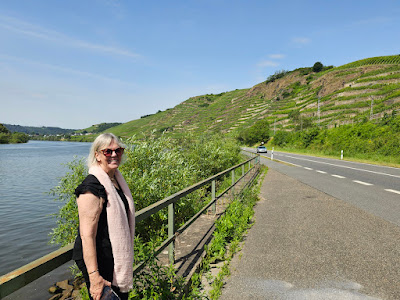

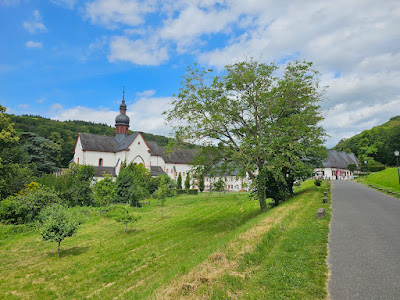





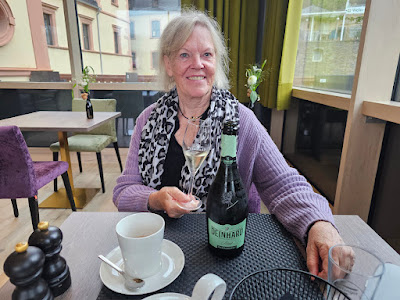





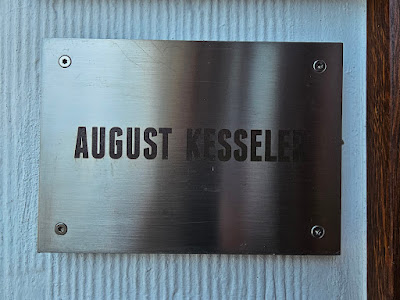





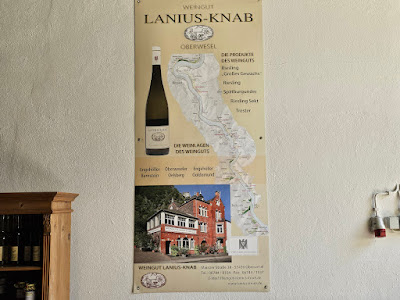



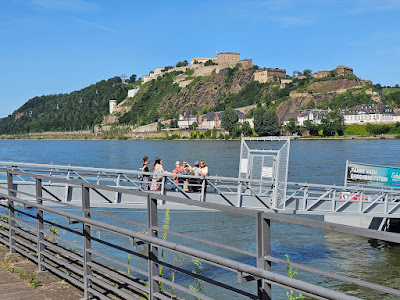
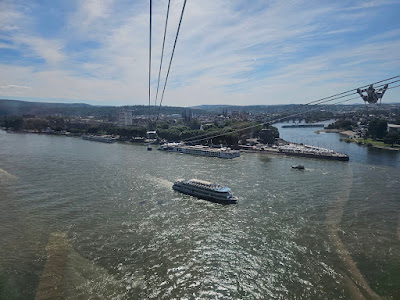













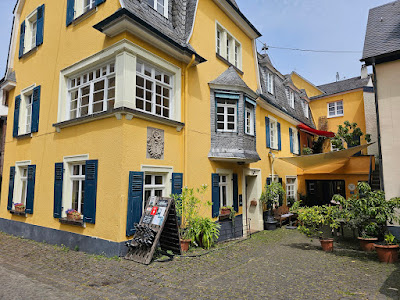

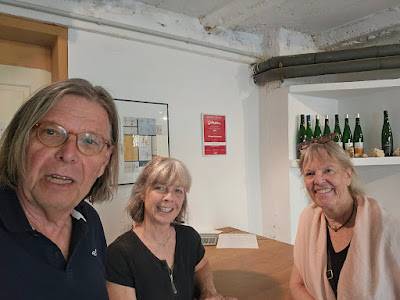






















No comments:
Post a Comment